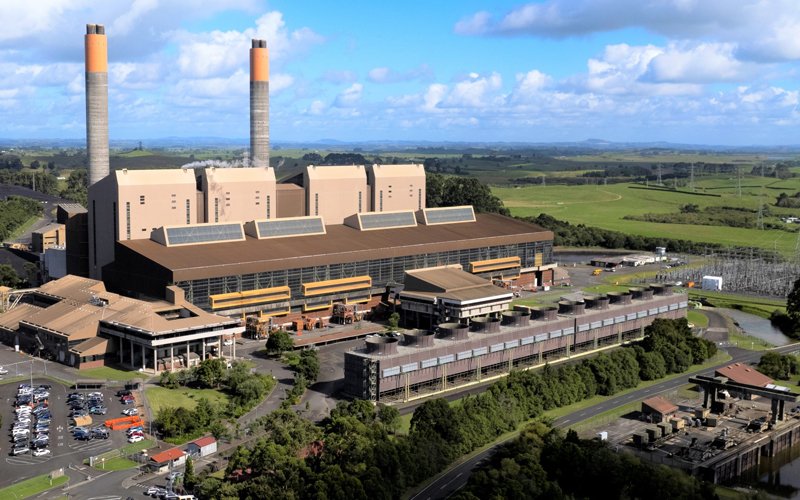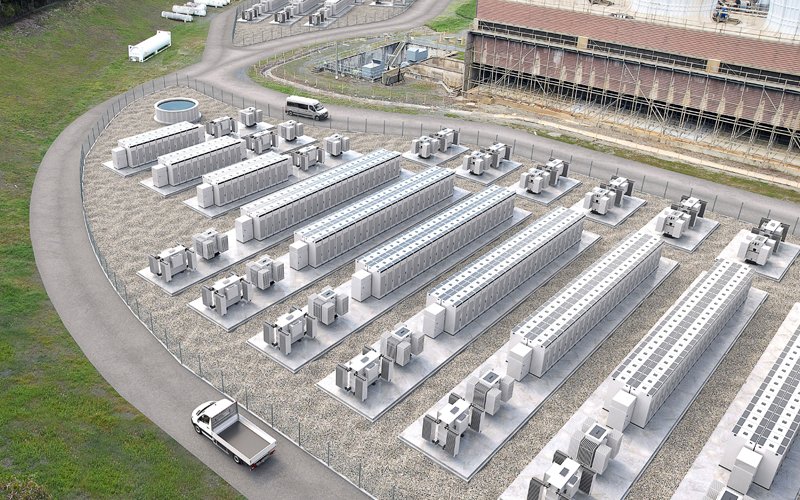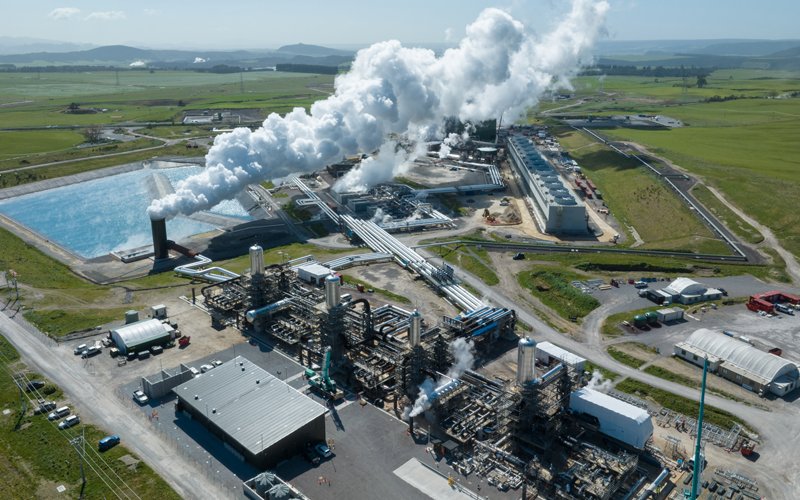4 Jun 2024
Our future is electric, but getting there will be no picnic – in fact, there’s no guarantee we’ll be able to keep the lights on without interruption this winter. In its recent “Winter 2024 Outlook”, system operator Transpower identified a heightened risk of going short at times, warning that Aotearoa needs to accelerate investment in more “flexible” sources in our electricity system to cover peak winter demand.
We are in a tricky transitionary moment with our broader energy system, trying to balance security, affordability and sustainability – the so-called “energy trilemma”. According to the Climate Change Commission, by 2050 New Zealand needs to achieve 60 percent of energy needs from electricity (it’s currently around 40 percent). Renewable sources such as wind and solar will be key, but they are limited, and potentially put security of supply at risk due to their intermittency. Having enough thermal generation to bridge the gap – both for “firming” (maintaining output from variable intermittent supply) and “peaking” (managing peak demand) – looks increasingly problematic. Adding to the complexity, energy affordability is heading in the wrong direction, and we have a new government with a different take on how to meet the energy challenge, demonstrated by its rapid axing of the Lake Onslow pumped hydro scheme.
Factoring in risk
John Kidd, Director and Head of Research for research house Enerlytica, distinguishes electricity and gas from the rest of the energy system – electricity and gas being indigenous, with most of the balance being imported liquid fuels. Both are “tense”, but it’s electricity and gas that are the most stressed.
“The market is pricing a substantial level of risk into the next few years of supply,” he says.

Genesis Energy's Huntly Power Station has capacity of 1,200 MW. Photo: Genesis Energy
Why the angst? That predicted dry winter for one thing. John points out that the past two winters have been unusually wet, which has meant less demand for gas and coal for firming. As a result, we were cushioned from the worst effects when Genesis Energy suffered a prolonged outage at its combined cycle gas plant at Huntly last July, followed by one of Contact Energy’s fast-start gas peakers in Taranaki being damaged. Both incidents underscored the system’s vulnerability to unanticipated outages, particularly at a time when demand growth in the upper North Island is exacerbating concern about having sufficient dispatchable generation capacity.
“We didn’t get the level of investment we needed at the right time to remove some of the stress we’re now seeing,” he says, citing the previous government’s offshore oil and gas ban, its targeting of 100 percent renewable electricity by 2030, and the Lake Onslow scheme as having a chilling effect.
Identifying vulnerabilities
Where are we most vulnerable? Transpower Executive General Manager Grid Development John Clarke FEngNZ says two things are in play. One is the dry year concern of not having enough energy in the system and suffering another 2008, when desperately low hydro lakes precipitated a national electricity conservation campaign. That crisis led to changes for Transpower – among other things it began publishing an annual security of supply assessment – and to the market to better manage this risk. John believes those reforms make a repeat of 2008 unlikely while our large gas- and coal-fired thermal generators in the North Island are still in service.
The market is pricing a substantial level of risk into the next few years of supply.
More concerning for Transpower is the risk of coming up short when demand spikes and perhaps wind suddenly falls away or there’s an equipment failure somewhere. It’s a short-lived problem and may involve only a handful of mid-winter nights and mornings, “… but the consequences are serious if you have to turn off people’s power because you run out of capacity”.
We shouldn’t underestimate the effect of the intermittency of wind and solar on the system. Across a fortnight in March, the capacity factor of wind averaged 17 percent in the first week and 50 percent the next – “which is a massive swing” says John Kidd.
Part of the answer is to build more flexible, rapidly dispatchable electricity for “peaking” – juice the system can call on immediately at times of particularly high demand. That’s not necessarily gas-fired – John Clarke cites resources such as grid-scale batteries, and John Kidd says Mercury Energy’s Waikato River hydro system could operate more as a peaking plant, assuming there was additional generation to cover baseload.
Batteries or gas to the rescue?
The batteries are coming – for example, Meridian Energy is building a 100 MW system at its Ruakākā Energy Park near Marsden Point. And there have been recent demand-side developments, including an agreement between Meridian and Tiwai Point, as well as Contact Energy’s deal to supply flexible off-peak power to New Zealand Steel at Glenbrook. But gas-fired peaking is going to be vital for at least another decade.
In fact, there’s a school of thought that we need to build more of it. But that’s not going to be an easy ask. Gas fields are in sharp decline, and investors aren’t exactly queuing up to finance thermal power plants.
“The capital markets in New Zealand have started applying significant ESG [environmental, social and governance] factor discounts to share prices where companies are investing in assets and fuels with a heavy carbon footprint, which means no one is investing in the generation needed to deliver reliability,” says Genesis Chief Executive Malcolm Johns.
“That’s not a 2024 and 2025 winter problem, it’s an ongoing 25-year problem for the system because we’re relying heavily on intermittent solar and wind to get us to that 60 percent target.”

Genesis Energy plans to install up to 400 MW (800 MWh) of battery capacity at Huntly Power Station. Photo: Genesis Energy
He notes that his company’s Rankine units at Huntly, which have a combined capacity of 750 MW, can’t respond quickly to sudden need. “Is there enough generation to cover off winter peaks at the moment? Yes. Do we have the market mechanisms to utilise that generation? No, we don’t. Do we have enough firming capacity in the system for what we need to do over the next 25 years? Doesn’t look like it. Those are the challenges in front of us.”
The key targets, he argues, are 60 percent electrified and 100 percent reliable, and we should accept that the last three to five percent will come from non-renewable sources, at least during this transitionary phase. In May, Genesis announced it expects to be buying coal again by the end of the year “to keep the lights on” for customers in the light of reduced gas supplies and increasing demand.
Increasing generation capacity

First steam at Contact’s Tauhara geothermal power station in Taupō. Photo: Contact
Beyond the peaking and firming question, we simply need to build more generating capacity, adds John Kidd, who likes the Government’s talk of fast-track consenting.
“You need to enable as much generation of any format as you can to come into the system as quickly as you can, because that takes away the burden of peaking.”
It is happening, albeit slower than many would like. Genesis, which is targeting 95 percent renewable generation by 2035, will spend $1.1b over the next seven years to build solar and wind plants, and plans a grid-scale battery at Huntly. It’s also investigating the case for running the Rankines on biomass, with an answer expected this year.
Meanwhile, Contact Energy has invested more than $1.2b in its new Tauhara geothermal power station at Taupō and to extend its Te Huka plant, for a combined 225 MW of additional baseline electricity. The company is contemplating a similar investment to replace its original Wairakei geothermal plant, says CEO Mike Fuge CMEngNZ, “… and we have further geothermal opportunities beyond that, as well as a pipeline of potential wind, solar and battery plants”.

Tauhara will house the world’s largest single shaft geothermal steam turbine.Photo: Contact
Resilience and affordability
Achieving a reliable power system isn’t only about generation capacity, however. The network is vulnerable to natural disasters, and much of the infrastructure dates to the 1970s, 1980s and 1990s. Transpower has sought $40m per year to “harden” critical older sites, and is focused on resilience in planning for the grid’s expansion through the 2030s and beyond.
“Particularly in the central North Island, when building new transmission routes you have an opportunity to make sure there’s a diversified network,” Transpower’s John Clarke says.
As for the affordability question, Genesis’ Malcolm Johns reckons the key is efficient delivery.
“Getting the right capital deployed at the right time over the next 25 years will be the most impactful thing we can do for electricity prices,” he remarks. He adds there will also be a greater role for demand response as businesses and homes electrify.
We will support our customers to contribute to affordable grid security in ways that work for them.”
Improving security of supply
The Electricity Authority is as concerned as anyone about the capacity issue heading into this winter, particularly short-term challenges due to equipment failure or wind dropping away during peak demand. But it is also engaged in planning to mitigate risk as we add more wind and solar. Among its solutions to improve security of supply in the near term are improved wind forecasting and enhanced dispatch notification. Looking further ahead, “Incentivising flexible resources such as battery energy storage systems, demand response and new commercial markets will play a critical role in meeting the flexibility challenge,” says Manager Operations Policy Chris Otton, adding that the Authority has ongoing work programmes focused on the evolution of the wholesale market and the future operation of the system.
This article was first published in the June 2024 issue of EG magazine.


